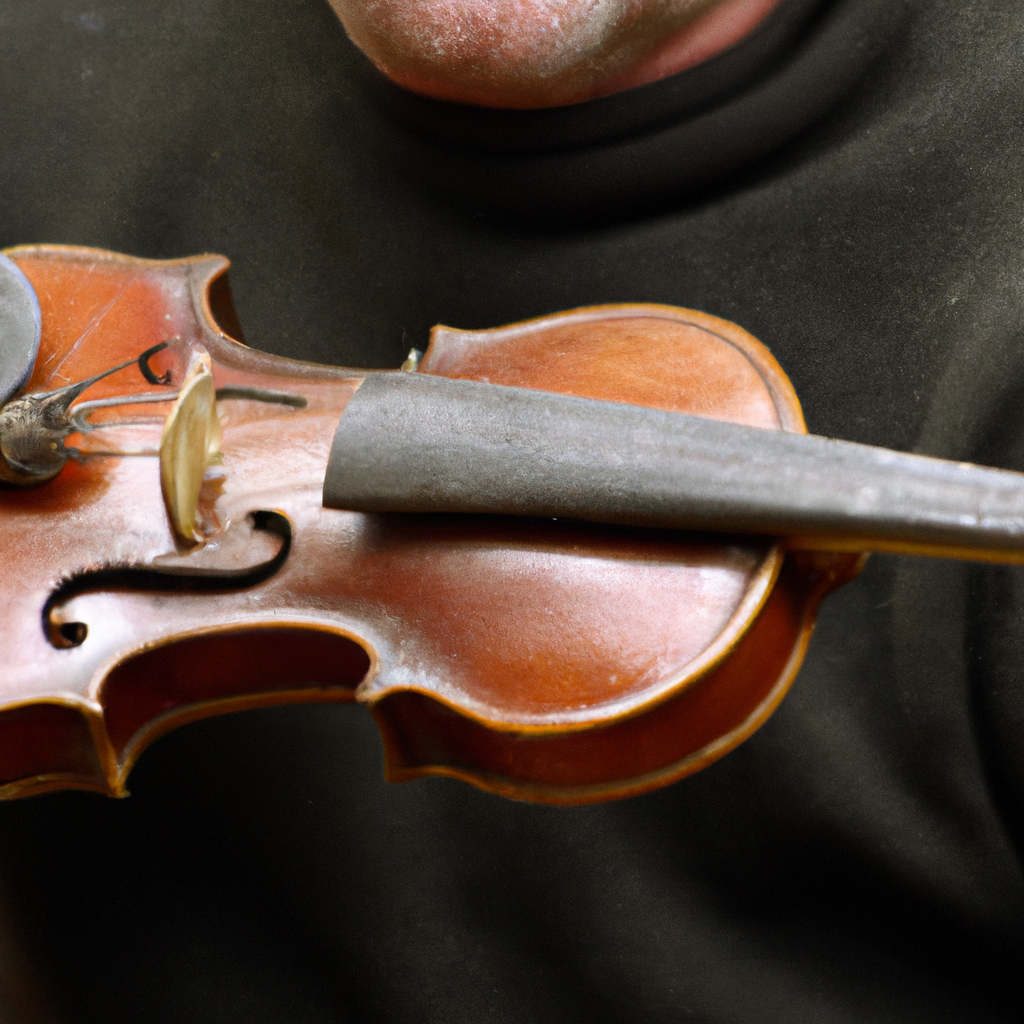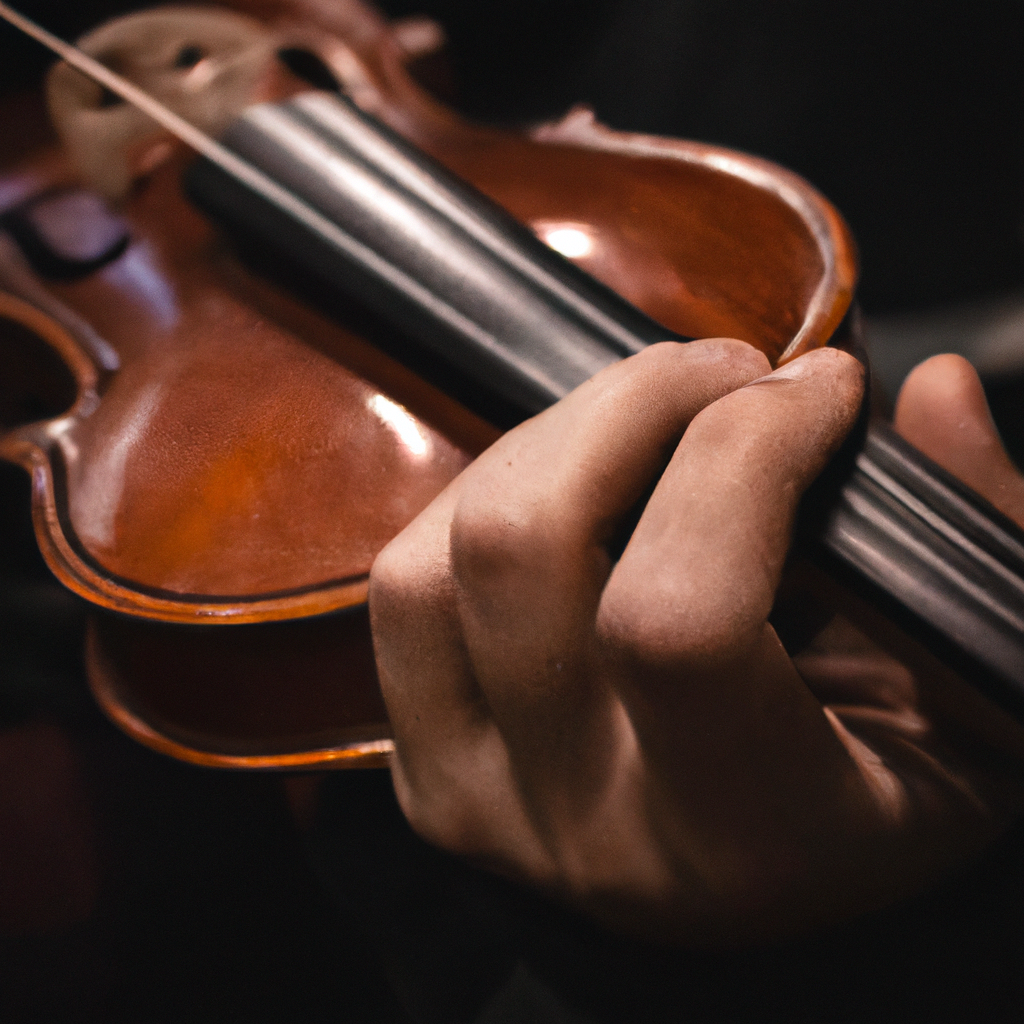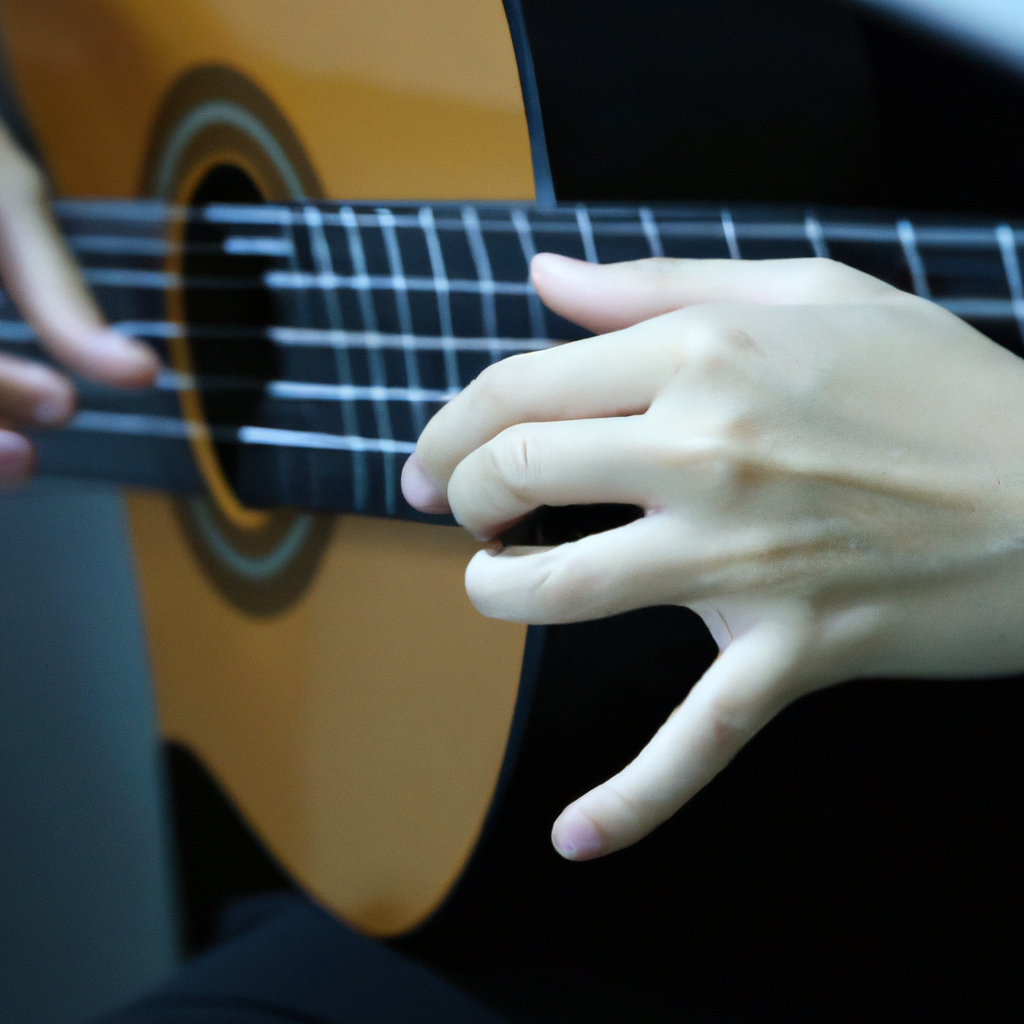
The violin is a beautiful and versatile instrument that has captivated audiences for centuries. Its rich and expressive sound has made it a staple in classical music, as well as other genres like jazz, folk, and even rock. Learning to play the violin can be a rewarding and fulfilling journey, but it requires dedication, patience, and the right approach. In this article, we will explore the dos and don'ts when learning the violin to help you develop a strong foundation and avoid common pitfalls.

Having a knowledgeable and experienced teacher is crucial when learning the violin. They can guide you through proper technique, help you develop good habits, and provide valuable feedback and instruction. Look for teachers or schools with a strong reputation and consider their qualifications, teaching style, and the success of their students.

Consistency is key when it comes to learning any instrument, and the violin is no exception. Set aside dedicated time each day to practice and stick to it. Regular practice will help you build muscle memory, strengthen your skills, and progress more quickly.

Before diving into playing pieces, it's essential to warm up your hands and fingers with exercises that focus on finger strength, dexterity, and coordination. Additionally, pay attention to proper bowing technique, hand positioning, and intonation to ensure a clean and beautiful sound.

Having correct posture and holding the violin properly is crucial for developing good technique and avoiding strain or injuries. Pay attention to your body alignment, shoulder position, and the balance of the violin. This will help you produce a better sound and prevent physical discomfort.
When starting out, it's important to choose pieces that are within your skill level. Starting with simple songs allows you to focus on developing good intonation, rhythm, and bow control. As you progress, gradually challenge yourself with more complex pieces to expand your repertoire and improve your overall musicianship.
Consistency in practicing is essential for progress. Skipping practice sessions can hinder your development and make it harder to build upon what you've learned. Even on days when you don't feel motivated, remind yourself of your goals, and find ways to make practicing enjoyable.
Learning the fundamentals is crucial for long-term success on the violin. Take your time to master each technique and concept before moving on to more advanced material. Rushing through the basics can lead to sloppy playing and hinder your progress in the long run.
Developing bad habits early on can be detrimental to your progress as a violinist. Pay attention to proper finger placement, bowing technique, and intonation from the beginning. If you notice any bad habits forming, address them promptly with the help of your teacher.
Every violinist progresses at their own pace, and comparing yourself to others can be demotivating. Instead, focus on your own progress and celebrate the small victories along the way. Remember that learning the violin is a personal journey, and everyone's path is unique.
Tension and stress can negatively impact your playing and hinder your progress. Pay attention to your body and make sure you're relaxed while playing. Practice deep breathing and incorporate relaxation techniques to help reduce tension and enhance your overall performance.
Choosing the right violin can be overwhelming, especially for beginners. Seek guidance from a professional or experienced violinist who can help you navigate the options and find a violin that suits your needs and budget.
While the appearance of a violin is important, sound quality should be your primary consideration. Visit a violin shop or try out different violins before making a decision. Listen carefully to the sound produced and choose a violin that resonates with you.
If you're unsure about committing to a purchase, consider renting a violin initially. Renting allows you to try different violins and assess your commitment to learning the instrument before making a significant investment.
Proper sizing is crucial, especially for younger players. A violin that is too big or too small can hinder your progress and cause physical discomfort. Consult with a violin teacher or professional to ensure you have the right size and fit for your body.
Research different violin brands and models within your budget range. Read reviews, seek recommendations, and try out as many violins as possible. Finding the right violin for you is a personal choice, and it's important to explore your options before making a decision.
Invest in a good-quality case to protect your violin when it's not in use. A proper case will shield the instrument from dust, humidity, and accidental damage. Ensure that the case provides a snug fit and has adequate padding for added protection.
Extreme temperatures and humidity can damage the wood and affect the sound quality of the violin. Avoid leaving the instrument in direct sunlight, near heating vents, or in areas with high humidity. If you live in a region with fluctuating weather conditions, consider using a humidifier or dehumidifier to maintain optimal conditions for your violin.
Regular cleaning helps maintain the appearance and performance of your violin. Use a soft, lint-free cloth to wipe away rosin dust and fingerprints. Avoid using harsh chemicals or abrasive materials that can damage the varnish or wood. Consult with a luthier for recommended cleaning products.
Regular maintenance and check-ups by a professional luthier are essential for the longevity and optimal performance of your violin. They can inspect the instrument for any issues, make necessary adjustments, and provide valuable advice on care and maintenance.
Handle your violin with caution to prevent accidental damage. Always hold the instrument by the neck and avoid gripping it too tightly. Be mindful of your surroundings and avoid placing the violin in areas where it can be knocked over or bumped.
Breaking your practice sessions into smaller, focused segments can help you stay focused and maximize your productivity. Instead of practicing for long stretches, divide your practice time into shorter sessions with specific goals and areas of focus.
While it's essential to address challenging sections in your pieces, don't neglect the rest of the music. Practice the entire piece to develop a sense of continuity, musicality, and flow. This will also help you understand the context of the difficult sections and make them easier to tackle.
Recording your practice sessions allows you to listen back and evaluate your playing objectively. It helps you identify areas for improvement, spot technical flaws, and track your progress over time. Use this tool as a valuable self-evaluation tool to refine your skills.
Practicing for long periods without breaks can lead to fatigue and decreased focus. Take regular rests to give your mind and body time to recharge. Use this time to stretch, hydrate, and relax before returning to your practice sessions.
While it's important to work on challenging pieces, don't forget to mix in enjoyable and fun pieces to keep your motivation high. Playing music you love can reignite your passion for the instrument and provide a refreshing break from more demanding repertoire.
When faced with challenges, don't hesitate to seek guidance from your teacher or a mentor. They can provide valuable insights, offer solutions, and help you overcome obstacles. Remember that it's okay to ask for help and that even the most experienced musicians face challenges in their musical journey.
Mistakes are an inevitable part of the learning process. Instead of getting discouraged, view them as opportunities to learn and grow. Embrace the mindset of continuous improvement and use each mistake as a stepping stone towards becoming a better violinist.
Developing your sight-reading and ear training skills is crucial for becoming a well-rounded musician. Incorporate sight-reading exercises and ear training exercises into your practice routine to enhance your musicality and ability to learn new pieces more efficiently.
Proper breathing and relaxation techniques can greatly impact your playing. Incorporate breathing exercises and relaxation techniques into your practice sessions to reduce tension, improve focus, and enhance your overall performance.
Mindless repetition without focus and intention can lead to frustration and a lack of progress. Practice effectively by breaking down challenging sections, working on specific technical aspects, and being mindful of your goals. Quality practice is more important than the quantity of practice.
Performing in front of others can help you build confidence and overcome stage fright. Practice playing for family and friends or consider participating in recitals, school concerts, or open mic nights. The more you expose yourself to performance situations, the more comfortable you will become.
Muscle memory is important, but it's equally important to practice mentally visualizing performances. Close your eyes and imagine yourself playing the piece flawlessly, focusing on every detail. This mental preparation can enhance your confidence and help you deliver a more expressive and engaging performance.
Stage fright is a common challenge for many musicians. Prepare yourself by practicing deep breathing and relaxation techniques before performances. These techniques can help calm your nerves, reduce anxiety, and allow you to perform at your best.
Stage presence and body language play a significant role in captivating audiences during performances. Pay attention to your posture, facial expressions, and gestures. Engage with your audience and let your passion for the music shine through your performance.
During performances, it's essential to stay focused and maintain a positive mindset. Don't let mistakes or distractions derail you. Embrace the moment and enjoy the opportunity to share your music with others. Remember that every performance is a chance to grow as a musician.
Listening to professional violinists and studying their interpretations can greatly enhance your musicality. Pay attention to their phrasing, dynamics, and expressive techniques. Incorporate their ideas into your own playing to develop a unique musical voice.
While it's important to honor the composer's intentions, don't be afraid to experiment and add your personal expression to pieces. Injecting your unique style and interpretation can bring new life and freshness to the music.
Studying music theory and understanding the structure of the pieces you play will deepen your musical understanding. Familiarize yourself with key signatures, scales, chord progressions, and other musical concepts. This knowledge will inform your interpretation and allow you to make more informed musical choices.
When playing a piece, don't rush through it. Instead, focus on phrasing and dynamics to bring out the musicality. Pay attention to the contours of the melody, the rise and fall of the dynamics, and the overall shape of the music.
Exploring different genres and styles beyond classical music can broaden your musicality and expand your horizons. Experiment with jazz, folk, pop, or any other genre that interests you. This exposure will enrich your playing and make you a more versatile violinist.
Warming up properly before each practice session helps prevent injuries. Incorporate stretching exercises, finger warm-ups, and gentle playing to prepare your muscles and joints for the demands of playing the violin.
If you experience any pain or discomfort while playing, don't ignore it. Pain can be a sign of an underlying issue or improper technique. Seek medical attention if necessary to prevent further injury and address the problem early on.
Incorporating stretching and strengthening exercises into your routine can help prevent injuries and improve your playing. Focus on exercises that target your hands, wrists, arms, and shoulders. Consult with a physical therapist or specialized violinist to develop a personalized exercise routine.
Pushing yourself too hard can lead to overuse injuries and burnout. Take breaks during practice sessions, listen to your body's limitations, and don't ignore signs of fatigue. Remember that violin playing is a marathon, not a sprint.
Maintaining good posture and ergonomics while playing is crucial for preventing strain on your body. Pay attention to your seated or standing position, the angle of your arms and wrists, and the position of your violin and bow. Correct any imbalances or tension to promote a healthy and pain-free playing experience.
Setting realistic goals and tracking your progress can help maintain motivation. Break down larger goals into smaller achievable milestones and celebrate each accomplishment along the way. This sense of progress will fuel your motivation and keep you inspired.
While technical mastery is important, don't lose sight of the joy of playing music. Connect with the emotions and stories behind the music, and let that be your driving force. Remember why you started playing the violin in the first place and let that passion guide you.
Exploring different genres and styles can keep your interest levels high and prevent boredom. Play classical pieces one day, delve into jazz improvisation the next, or experiment with contemporary compositions. Embrace the diversity of the violin and let it inspire your musical journey.
Comparing your progress to others can be demoralizing and counterproductive. Embrace your unique musical journey and focus on your own growth and development. Remember that every violinist has their own path, and your progress is valid and valuable.
Joining a community of fellow violinists can provide support, inspiration, and a sense of belonging. Seek out local orchestras, music schools, or online forums to connect with other musicians. Surrounding yourself with like-minded individuals can help you stay motivated and inspired.
Recording yourself regularly allows you to assess your playing objectively. Set up a camera or use a smartphone to capture your performances or practice sessions. Listening back to the recordings will help you identify areas for improvement and track your progress over time.
While self-evaluation is important, it's essential not to be overly critical of your playing. Instead of focusing on mistakes, identify areas for improvement and create a plan to address them. Celebrate the progress you've made and use constructive criticism to guide your practice sessions.
Feedback from your teacher or experienced musicians can provide valuable insights and guidance. Share your recordings with them and ask for specific feedback on areas you're working on. Their expertise will help you refine your skills and make progress more efficiently.
While recordings can be helpful, they shouldn't replace regular lessons with a teacher. A teacher can offer real-time feedback, tailor instruction to your specific needs, and guide you through your musical journey. Recordings and lessons should complement each other for optimal progress.
Celebrate milestones and acknowledge your progress throughout the learning process. Recognize the hard work and dedication you've put into learning the violin. Reward yourself for reaching goals, big or small, and use these celebrations as motivation to keep moving forward.
If you're struggling to find a qualified teacher, consider exploring online resources, such as video tutorials or virtual lessons. While an in-person teacher is preferred, online options can still provide valuable guidance and instruction. Additionally, reach out to local music schools or organizations for recommendations.
While it's possible to learn the violin without a teacher, it's not recommended, especially for beginners. Having a teacher ensures proper technique, personalized guidance, and accountability. A teacher can also help you avoid bad habits and provide valuable feedback that accelerates your progress.
As a beginner, it's important to establish a consistent practice routine, but the duration may vary. Start with shorter practice sessions of around 15-30 minutes, focusing on building a strong foundation and developing good habits. Gradually increase the practice time as your skills and endurance improve.
Yes, you can learn the violin at any age. While it's often easier to learn at a younger age, adults can also successfully learn to play the violin. The key is to set realistic goals and be patient with yourself. Remember that it's never too late to start your musical journey.
Some common mistakes to avoid when learning the violin include improper posture, neglecting proper warm-up exercises, rushing through the basics, and comparing yourself to others. Additionally, avoid skipping practice sessions, developing bad habits, and neglecting the importance of relaxation and good technique. Embrace a growth mindset and focus on continuous improvement.
By following these dos and don'ts when learning the violin, you can set yourself up for success and make the most out of your musical journey. Remember to stay patient, persistent, and dedicated. With time, practice, and the right guidance, you can become a skilled and expressive violinist.
For more information on learning the violin and finding resources, visit https://bannhacflamenco.net/cho-thue-ban-nhac/luom-lat-tin-do-day/.